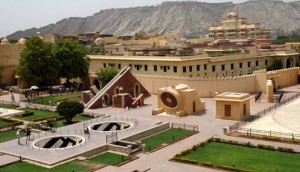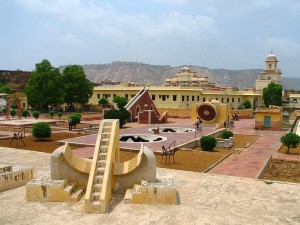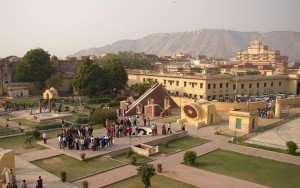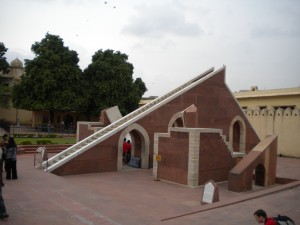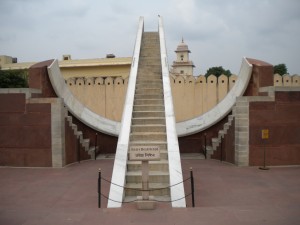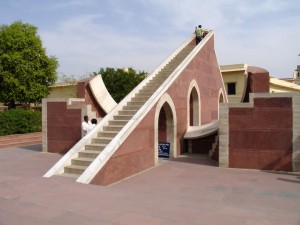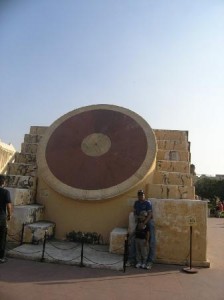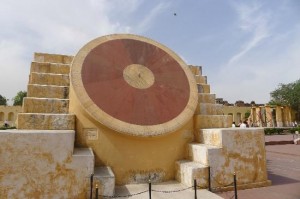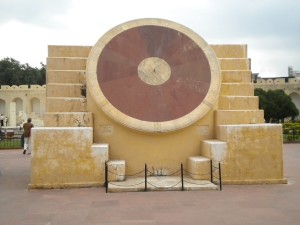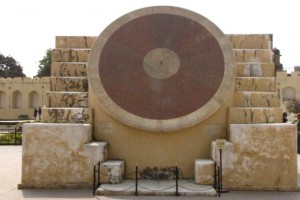Written by Soudip
April 29th 2014Other Places
You Are Here
Home > India > Shaniwar Wada, Pune Historical Facts and PicturesJantar Mantar, Jaipur Historical Facts and Pictures
The Jantar Mantar located in the city of Jaipur in Rajasthan, India, is a historical monument containing architectural astronomical instruments meant for observing the movement and positions of celestial bodies with naked eyes. Built in the eighteenth century, by Sawai Jai Singh or Jai Singh II, the Rajput ruler of Amber, the Jantar Mantar in Jaipur is now designated as a UNESCO World Heritage Site. Maharaja Jai Singh II built five similar astronomical observation sites in five different locations with the one at Jaipur being the best preserved one, containing around twenty large fixed instruments. Many of these instruments are the largest of their kind in the world.
The name originally derives from the words ‘jantar’, meaning ‘instrument’ and ‘mantar, meaning ‘formula’ or ‘calculation. So, the name literally stands for ‘calculation instrument’. Apart from holding great importance as a scientific and architectural landmark, Jantar Mantar also has considerable religious significance as ancient Indian astronomy was an integral part of Jyotisa. The observatory, symbolizing the royal authority of the Rajput rulers, served as an ideal meeting place for multiple scientific and political cultures of the time.
Jantar Mantar
Jantar Mantar Samrat Yantra
Jantar Mantar Sundial
Each of the instruments are fixed and focused to observe astronomical observation with the largest tool, the “Samrat Yantra”, being 90 feet high. It is plotted in a way that its shadow tells the time of a day. The stone, marble and metal constructions were thoroughly restored in the year 1901; however, the site was not considered a national monument before 1948, a year after independence.
Category
IndiaWritten by Soudip
April 29th 2014










